‘Made In Glashütte’ Vs. ‘Made In Germany’: What Puts Them Together, What Sets Them Apart
There is no doubt about the common conception that the Swiss make the best watches in the world.
“Precise as a Swiss watch” is a common saying that might spring to mind when you want to express that something goes as smoothly as you had envisioned. In many languages the term serves as a synonym for perfection.
Over many centuries, the hardworking Helvetian people have successfully established a tradition of horological prowess at the forefront of technical innovation and quality of the highest level.
Switzerland, the undisputed leader in watchmaking: yesterday and today
To this day, mechanical Swiss watches – particularly those to a great extent handcrafted and lauded for their precision, value, and pedigree – are synonymous with luxury. There is no other country in the world that can pride itself with this high standard of horological sophistication, savoir-faire, and experience.
This rings particularly true for the major watchmaking centers Geneva, Neuchâtel, and Biel. Not to forget the Vallée de Joux or the Jura Mountains with their crown jewels La Chaux-de-Fonds and Le Locle.
Generally considered the cradle of genuine haute horlogerie, the latter two watchmaking metropolises were even appointed UNESCO heritage sites in 2009 as they authentically showcase the region’s economic and cultural history with renowned watchmaking firms. These two cities are dedicated to and built by the watchmaking industry.
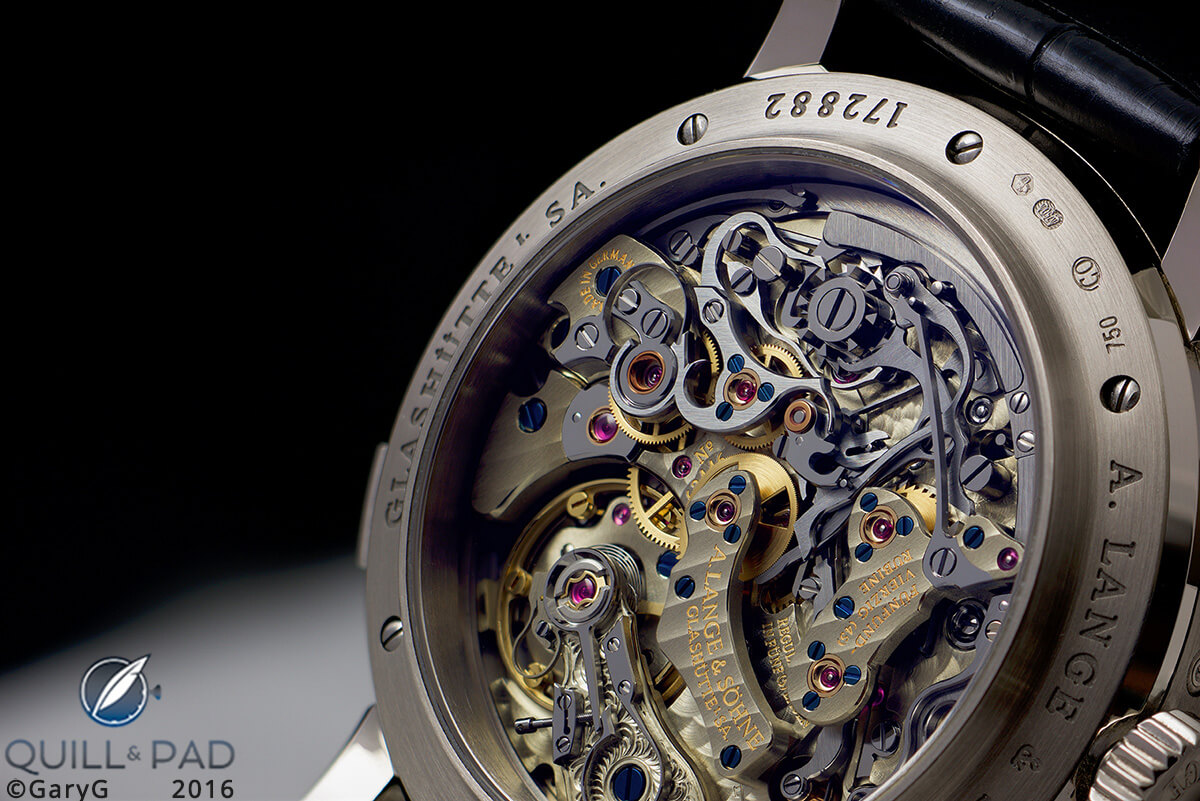
Full-frame view of the A. Lange & Söhne Datograph Perpetual movement
The fascinating story of the rise of Glashütte’s fine watchmaking
There is only one other place that can currently compete with the holistic city-wide approach that these latter two cities have taken to their principle source of income: Glashütte, Germany.
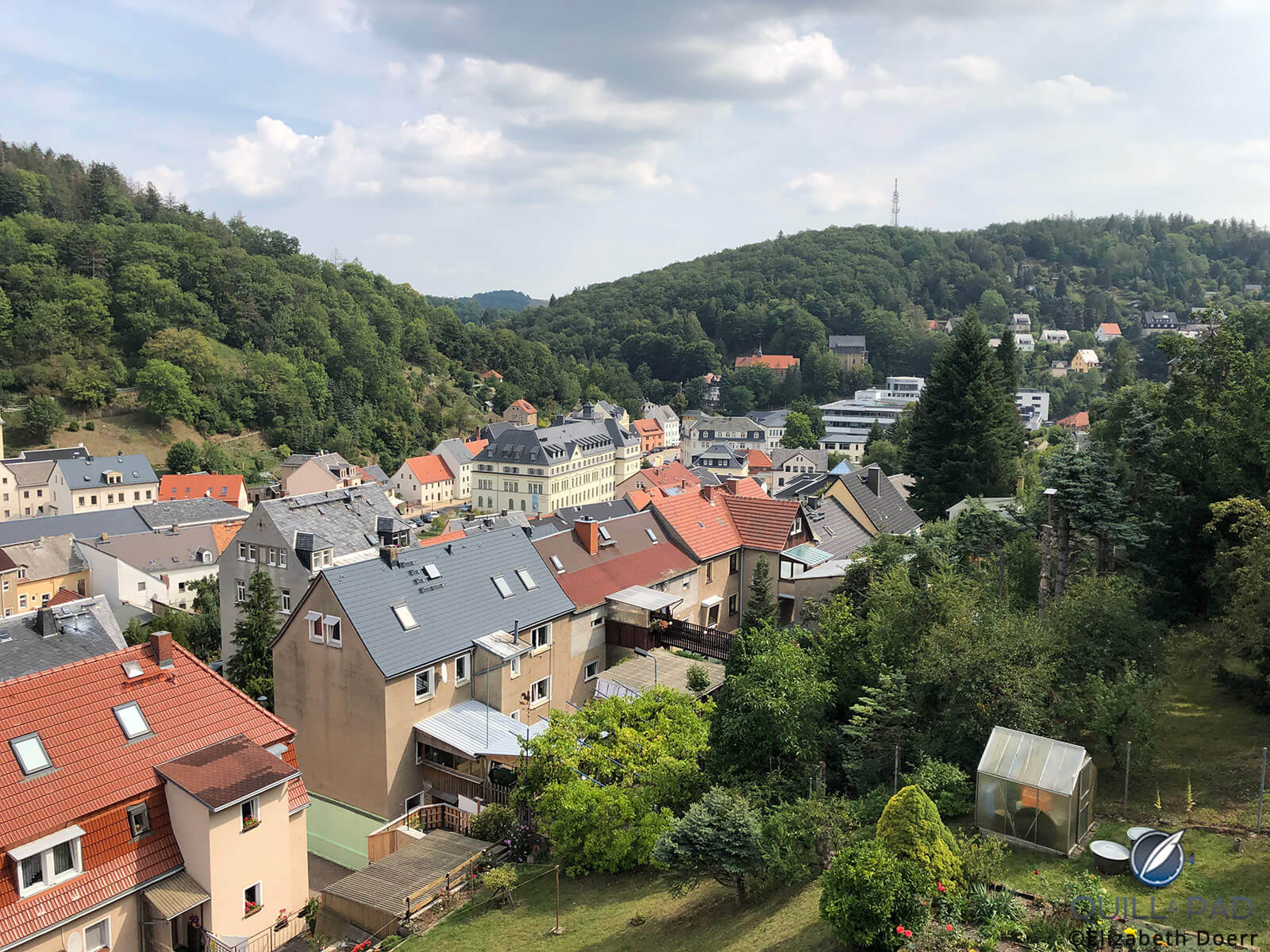
Glashütte as viewed from the Nomos Chronométrie building
The small Saxon city nestled in the eastern Ore Mountains near the Czech border draws on a noble tradition that was initiated by legendary watchmaker Ferdinand Adolph Lange (1815–1875).
When Lange founded a small workshop in 1845, he laid the cornerstone of an unparalleled success story, which is continued today after roughly 45 interrupted years as part of the VEB Glashütte watch factories under the regime of the former East German government.

A bust of Ferdinand Adolph Lange in Glashütte
Lange, the godfather of the Glashütte’s art of fine watchmaking, was a true visionary, not only in terms of timekeeping devices and revolutionary production methods: he also brought education, work, new prospects, and, ultimately, prosperity to the region in sore need of it.
Thanks to his efforts, clock and watch workshops, as well as specialized suppliers, popped up in the once bitterly poor town along the Müglitz River throughout the second half of the nineteenth century.
In a nutshell, this newly founded industry was soon able to master the entire manufacturing process of all components, from the movement to the case, hands, and dials. Glashütte’s self-proclaimed status as “The Home of the Time” – as one may read today on a sign upon entering the city limits – was born during these days of flowering spirit and economy.
Glashütte: a tiny place with a great spirit of innovation
It is hard to say today why the majority of the local population became involved in the watch trade, though most probably it was the lack of other opportunities in the economically underdeveloped region. However, when you meet people from Glashütte, they quickly underscore in their warm-hearted manner that they simply have watchmaking in their genes.
Whatever the reason, Glashütte was the birthplace of some of the finest elements such as the famous three-quarter plate crafted from German silver that was originally invented by Lange to simplify assembly and repair and provide stability to the movement.
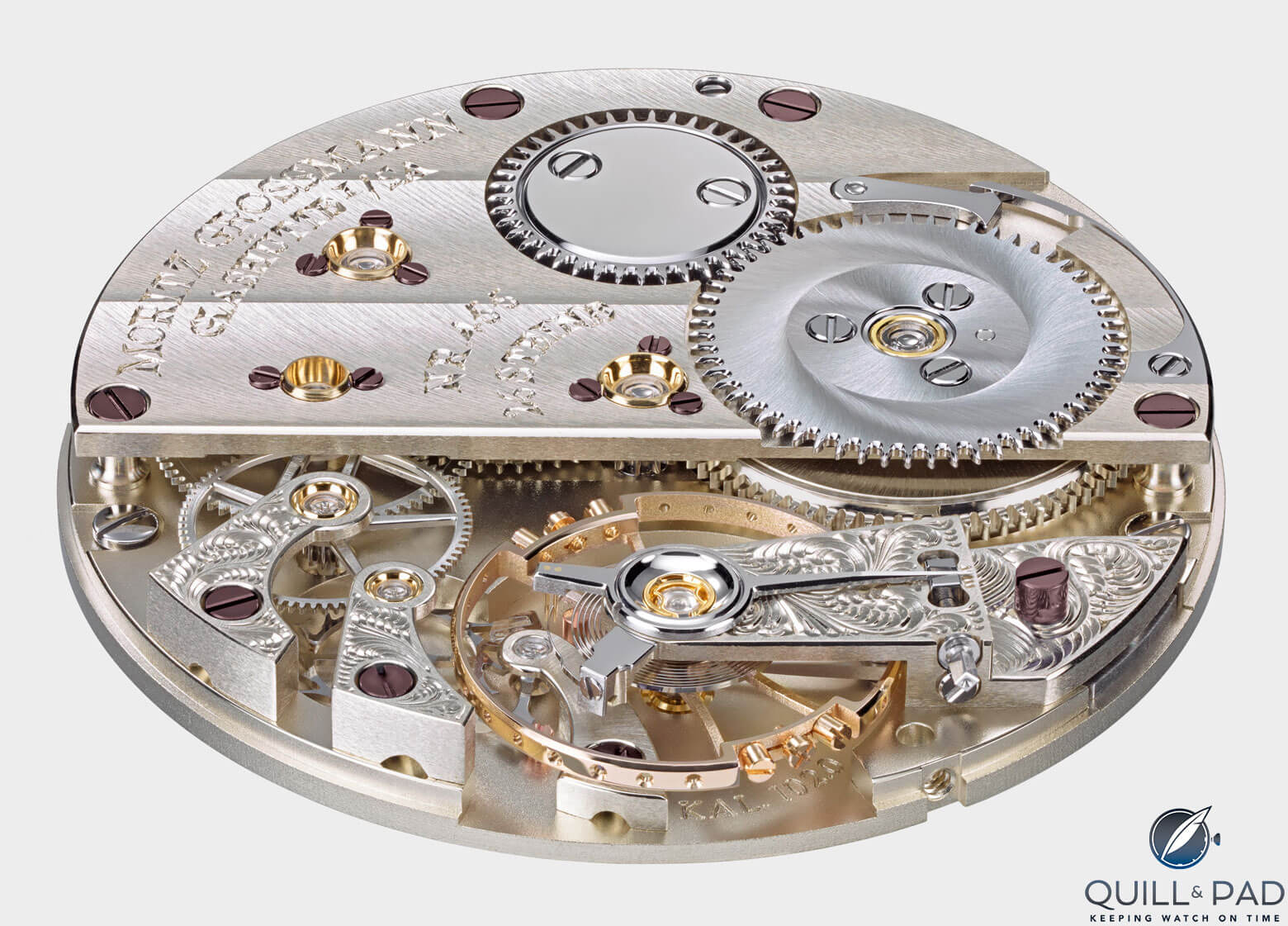
Moritz Grossmann Caliber 102 featuring a balance spring with Grossmann curve
Other inventions include the swan-neck fine regulation, the Grossmann curve (invented by and named after Carl Moritz Grossmann, a friend and contemporary of Lange who was crucial in founding the Glashütte School of Watchmaking), and the flying tourbillon, a brainchild of Alfred Helwig, an instructor at the school, in 1920.
An envious state of perfection
Glashütte’s art of fine craftsmanship offers a few characteristic elements that you won’t find in Switzerland. Some of the decoration techniques include Glashütte ribbing, a striped finish usually drawn diagonally across the surface; it looks similar to the Swiss côtes de Genève, but it is different. The Glashütte sunburst brushing is a circular decoration on ratchet wheels.
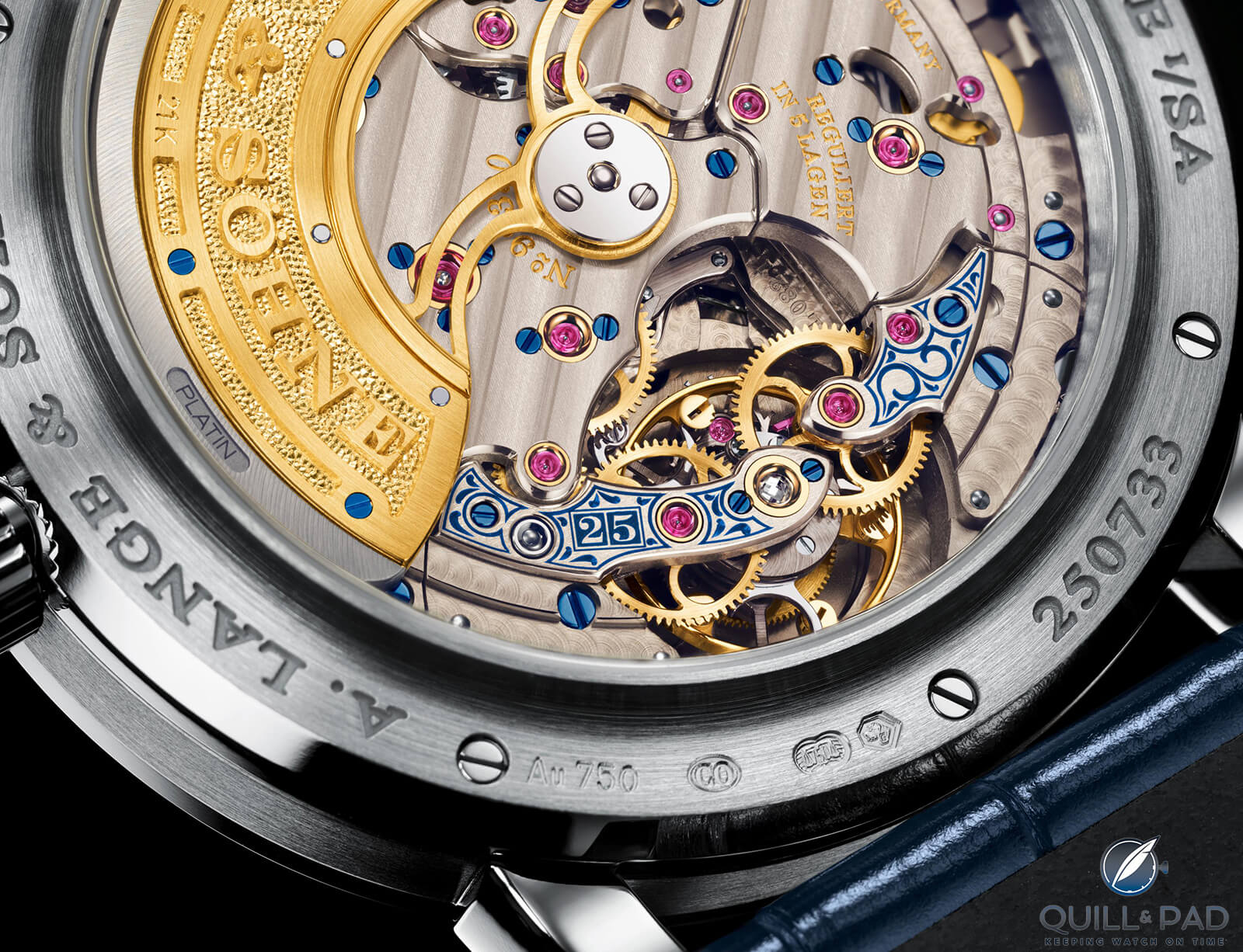
A close look at the regulator of the Lange 1 Tourbillon Perpetual Calendar in the 25th anniversary edition
The superb finishing executed then as now in most cases includes all movement surfaces, beveled, mirror-polished edges, blued screws, gold chatons, and exquisite engraving, especially on the balance cock, and fine finishing of each and every component, no matter how small it might be.
By the turn of the century, the small town of Glashütte south of Dresden had earned a reputation for craftsmanship and precision. The name “Glashütte” had turned into a synonym for some of the finest timepieces in the world, a quality seal that the Glashütte watchmakers were well aware of and wanted protected.
The point came toward the turn of the century that watch producers eyed one another with suspicion as to what extent their competitors’ pieces were entirely made in Glashütte, including the calibers. And so the Glashütte Rule evolved, an unwritten rule that a watch may only have “Glashütte” written on the dial if an overwhelming share was produced in the city.
This came to a head in 1906 and involved the original incarnation of Nomos (called Nomos-Uhr-Gesellschaft), whose founders Clements Guido Müller and Karl Nierbauer tried to pass off Swiss watches as from Glashütte to profit from the city’s excellent reputation. A. Lange & Söhne filed a lawsuit at that time to prevent them from continuing this practice.
And so the Glashütte Rule evolved from the same intention as Genevan watchmakers had in mind when they introduced the Geneva Seal. This regional certificate exclusively reserved for timepieces entirely made in the canton of Geneva was introduced in 1886 to protect the area’s unique workmanship and high quality.
Geneva Seal versus Glashütte Rule
However, the Seal of Geneva was much more official and precise about the set of rules it set out, including no less than eight technical requirements, each of which included several subitems.
The Glashütte Rule was not as specific. There was no inspection authority or even a written manifest. Still, the local companies established that at least 50 percent of a timepiece’s value had to be created in the city.
A. Lange & Söhne’s verdict was upheld until World War II when the ghastly fate of the city, leading to its woeful period in an unimaginative planned economy, consumed everything.
History sometimes shows an ironic side, and in the aftermath of A. Lange & Söhne’s glorious reestablishment of the Glashütte tradition after Germany’s reunification in early 1989 a version of Nomos was also back on the scene.
Roland Schwertner, a visionary businessman from Düsseldorf, founded a new company he christened Nomos, which today is a full-blown watch manufacture and Germany’s (and Glashütte’s) largest watch company in terms of volume.
Interestingly, after A. Lange & Söhne once again pointed the same fingers at the company for the exact same reasons in the early days of its existence, in 2007 the new Nomos – having already been to court to learn the same lesson again – filed against Mühle Glashütte, a traditional 150-year-old family company now in its fifth generation, for breaking the Glashütte Rule. Mühle almost went bankrupt from the mistake but is back on its feet today.
Glashütte i/SA today
With close to 7,000 inhabitants, Glashütte today is far from a buzzing hotspot; however, for watch aficionados it certainly is Germany’s shining capital.

Tutima M2 Pioneer (photo courtesy Sadry Ghacir)
Some of the finest modern watches are manufactured in state-of-the-art facilities where craftsmanship and modern production methods go hand in hand. Only a very select number of companies are allowed to put the sought-after lettering “Glashütte i/Sa” (meaning “Glashütte in Sachsen”) on their dials.
These are A. Lange & Söhne, Glashütte Original, Tutima Glashütte, Wempe Glashütte, and Moritz Grossmann.
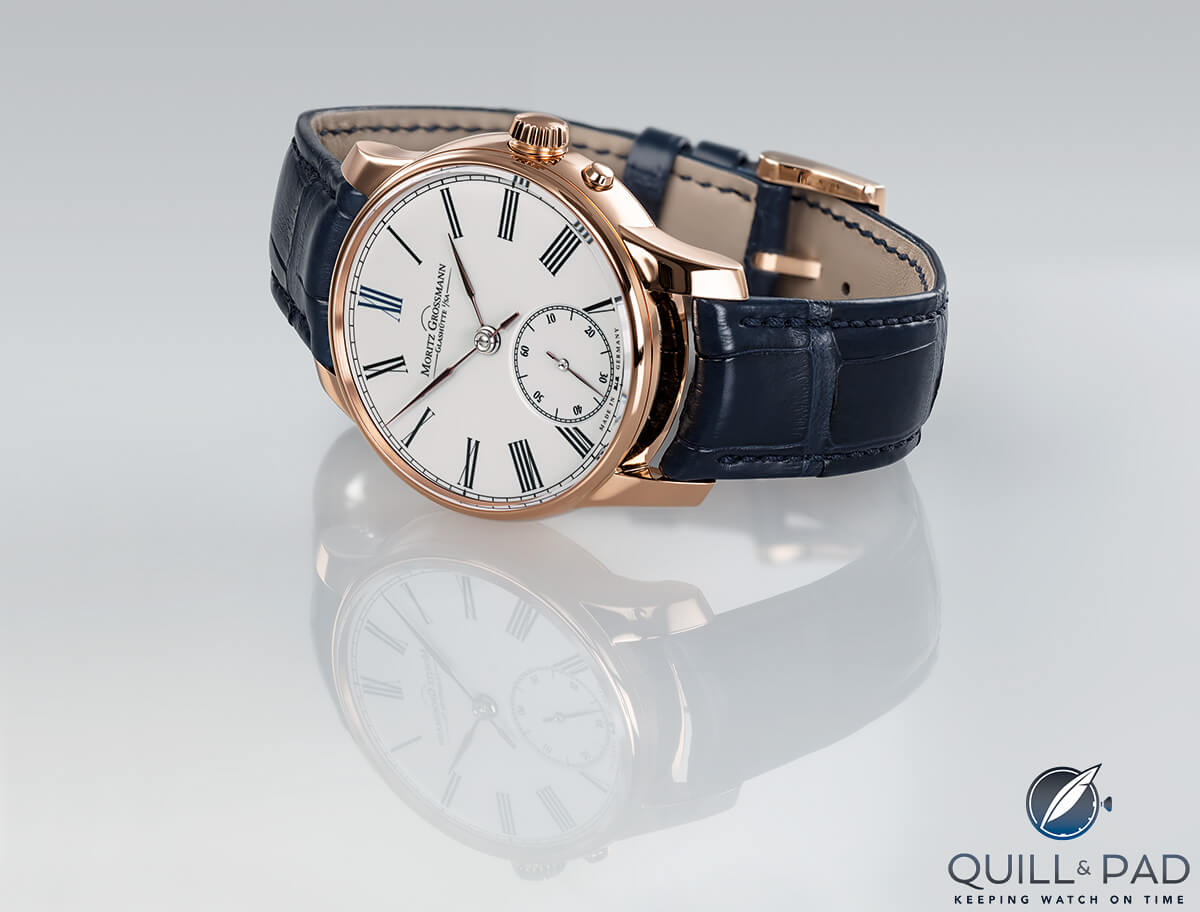
Moritz Grossmann Atum Enamel
Surprisingly, Nomos Glashütte, a genuine watch manufacture, foregoes “Glashütte i/Sa” and uses “Made in Germany” in most cases instead. This is probably for design reasons to avoid the duplication of the word Glashütte as it is part of the official brand name.

A. Lange & Söhne Little Lange 1 Moon Phase 25th Anniversary
Likewise, on some watches by A. Lange & Söhne “Germany” or “made in Germany” appears at the bottom. This could also be a design choice as on the Lange 1 family, the brand generally just leaves it with “Glashütte i/Sa” instead of doubling up like on most other watches.
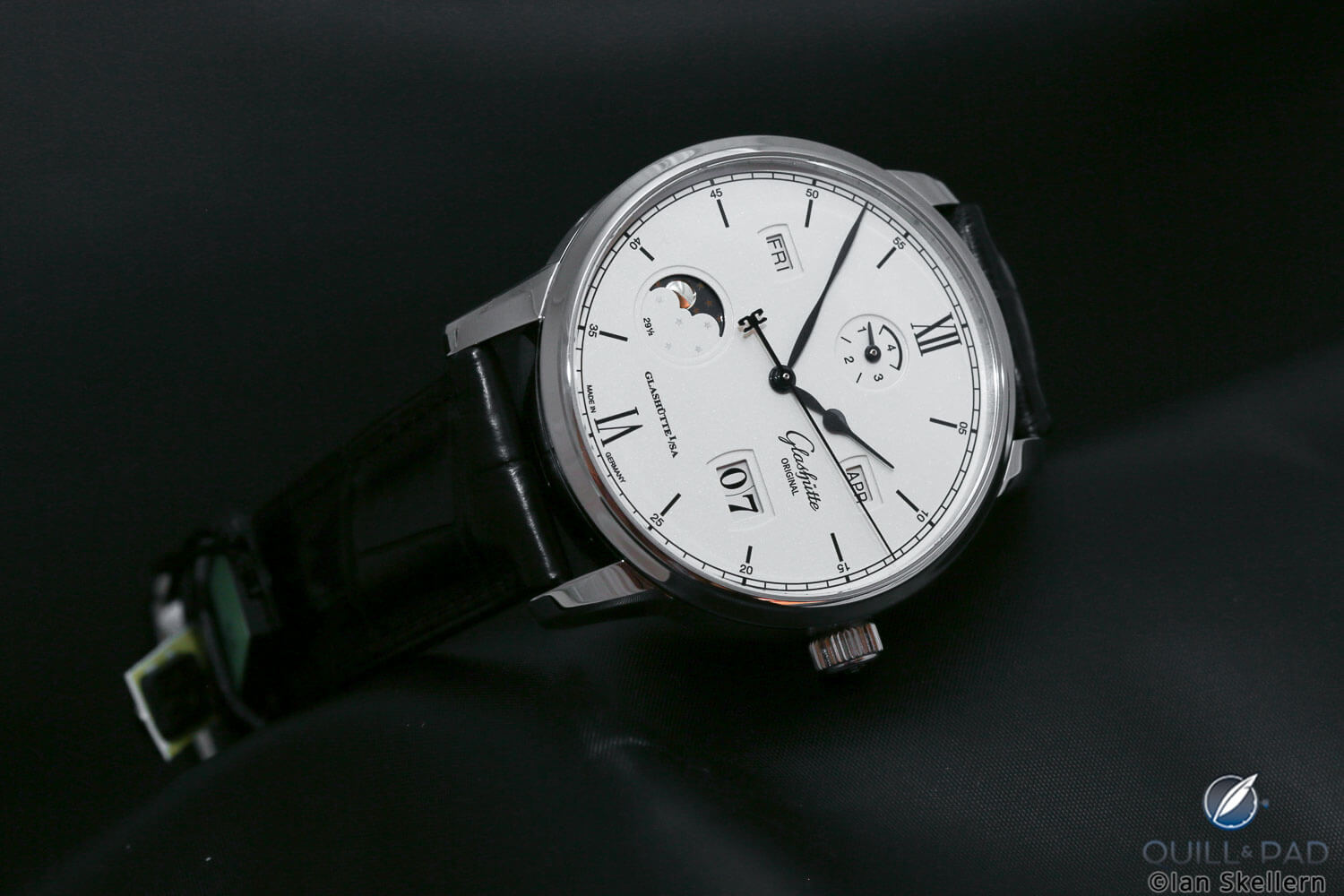
Glashütte Original Senator Excellence Perpetual Calendar Limited Edition
Glashütte Original also tends to double up the predicates on its dials as do Tutima Glashütte and Moritz Grossmann.
The amount of regional added value differs, though. Since even the top dogs can’t go entirely without at least some components from Swiss suppliers, it was agreed that the Glashütte Rule should remain at least 50 percent.
Even among experts, the percentage is controversial. There have been some efforts in the past to redefine the indication of origin, but so far without results. Some manufacturers not able to bear the original predicate get quite creative and use a slightly varied version.
German watchmaking beyond Glashütte
Glashütte is the crowning jewel in Germany’s established watch industry, but the country has more to offer – in fact a lot more than one might think. More than 100 German brands are found in numerous levels and areas of watchmaking, drawing from centuries of experience as well as modern engineering, a field in which the country enjoys world fame.
If you wanted to go on a “horological” trip through the country, it would lead you to all regions, from north to south and from west to east. You would discover traditional companies like Junghans, located in the southern Black Forest region, once the largest watch factory in the world and now quite famous for its Bauhaus collection created by the famous architect, artist, and lecturer Max Bill.
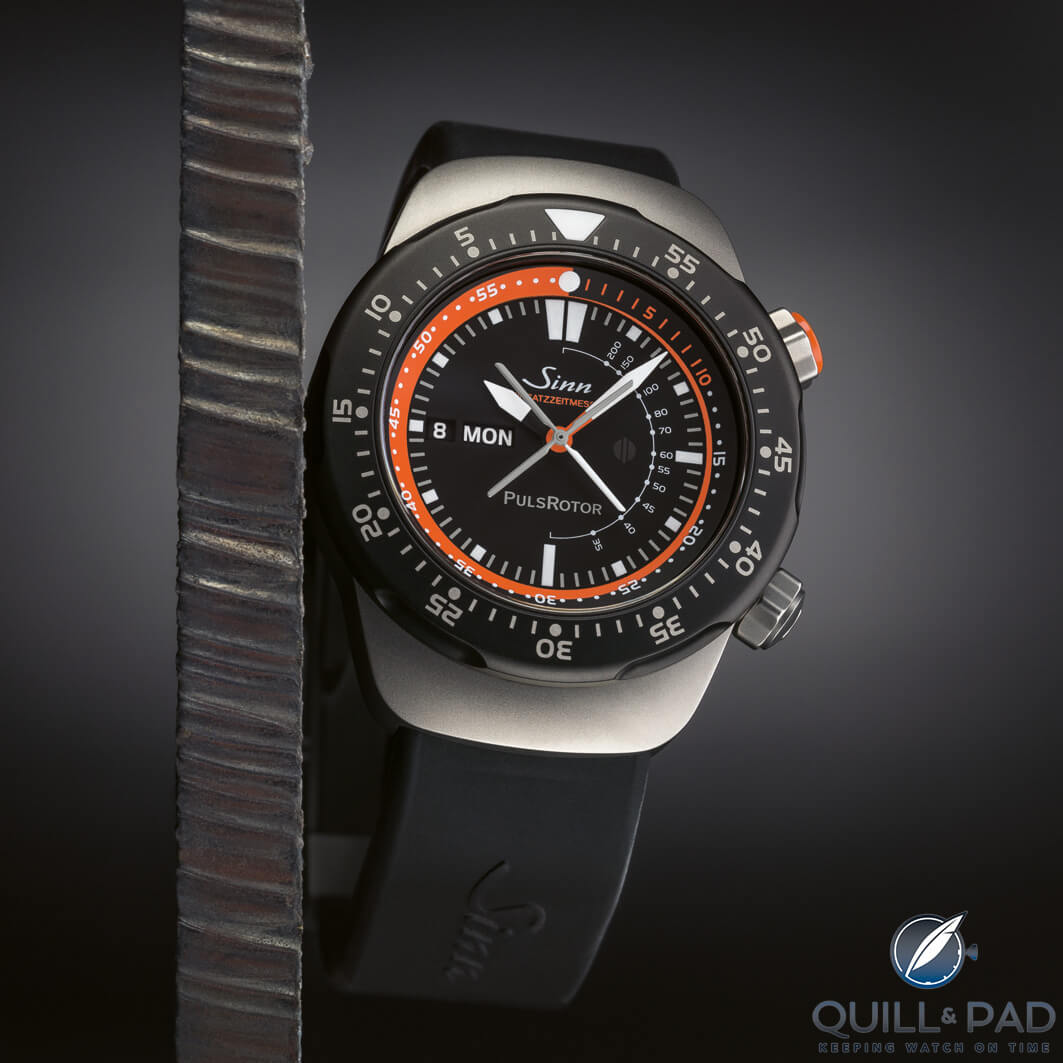
Sinn EZM 12
Sinn Spezialuhren is headquartered in Frankfurt. Founded by a former pilot instructor and now led by engineer Lothar Schmidt, this company has made a reputation for itself in terms of technological innovations such as scratch resistance, water resistance, temperature tolerance, and magnetic resistance.
In addition to their highly technological personalities, these watches offer a relatively nice value-for-money performance ratio. Also, Sinn was instrumental in establishing the first and only certificate for professional pilot watches, TESTAF.
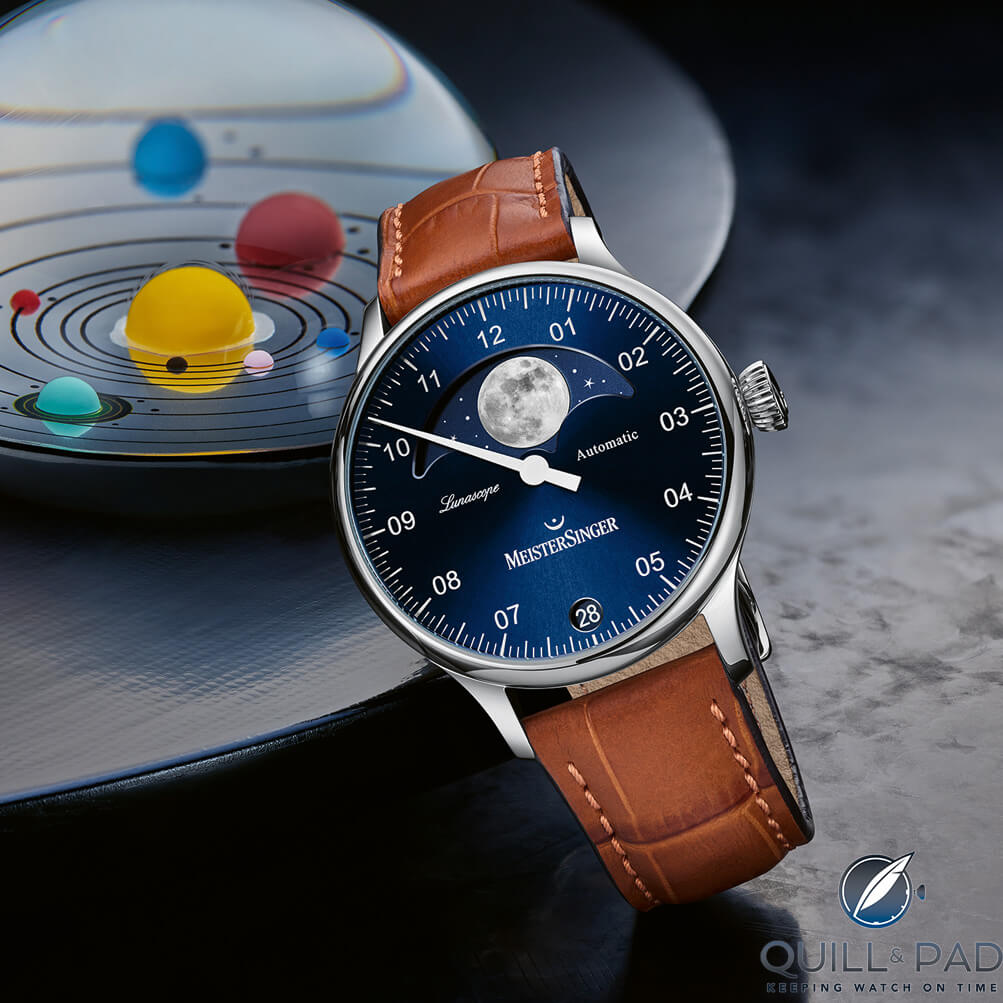
Meistersinger Lunascope
One of my personal favorites is Meistersinger, an almost 20-year-old brand headquartered in Münster and founded by Manfred Brassler, a designer who focused on the principle of a single-hand watch that shows the time in five-minute units.
With it comes the compelling idea of “slowing down.” Today, Meistersinger offers a nice variation on the topic in no-nonsense instrument watch style, other design watches with more than one hand, and even a premium line called Circularis powered by a manufacture movement commissioned from a Swiss specialist.
Made in Germany: Swiss movements, German design
Due to the lack of a fully blown movement manufacturer-cum-supplier such as ETA or Sellita, the majority of respectable German watch brands source their calibers from the country’s Swiss neighbor.
What constitutes the “Made in Germany” predicate, though? Using that is not as difficult as obtaining the right to use the Glashütte name.
If the design – a major asset of German watches, the birthplace of the influential Bauhaus school that is as contemporary today as it was 100 years ago when it started – the assembly, and the quality control take place in Germany, the watches qualify to bear the “Made in Germany” predicate.
And these watches benefit from the reputation of products made in Germany, known for their precision, longevity, originality, and reliability.
For more information, please visit A. Lange & Söhne, Tutima Glashütte, Nomos Glashütte, Glashütte Original, Wempe Glashütte, Sinn Spezialuhren, Meistersinger, and Moritz Grossmann.
You may also enjoy:
Point Of Reference: The Standards Of The Geneva Seal
Lange & Söhne Zeitwerk: A ‘Date’ With History
Made In Germany: The Glory Of Glashütte
How The Wall Came Tumbling Down: Made In Germany
3 New Timepieces From Germany To Smooth The Transition From Colorful Fall To Gray Winter
Leave a Reply
Want to join the discussion?Feel free to contribute!



Please also have a look at Guinand watches! Less known than Sinn – but more true to the old “Sinn mantra” in offering tool watches with high value for money. Add to that, a very high level of customer support.
Indeed Guinand is a very interesting brand following in the footsteps of the late Helmut Sinn. It is great to hear that you are satisfied with their offering and service!
Sorry, but I have not found such a famous brand as Bruno Söhnle in your list of watchmaking brands from Glashutte.
Is it by chance or do you think Bruno Söhnle is illegally using the Glashutte / SA inscription on their dials?
Not at all! Bruno Söhnle is indeed from Glashütte. We did not exhaustively list all the brands in the city in this article.
Thank you very much for your quick and clear answer. 🙂
My pleasure!